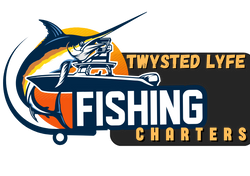Meet the Captain
Captain Bryan Maffei
Miami Fishing Charter
Looking for the ultimate adventure in Miami's bountiful waters? Look no further than Captain Bryan Maffei and Twysted Lyfe Charters! Embark on an unforgettable journey with our top-rated Miami fishing charters, designed for anglers seeking thrilling experiences. With a passion for the sea and years of expertise, Captain Bryan Maffei leads the way to the finest deep-sea fishing escapades in Miami. Our charters specialize in the adrenaline-pumping excitement of Miami deep sea fishing, targeting prized catches like sailfish, tuna, and mahi-mahi.
At Twysted Lyfe Charters, we redefine the essence of fishing in Miami Beach, Florida. Step aboard our state-of-the-art vessels and venture into the azure waters off Miami Beach for an unparalleled fishing adventure. Our charters cater to both seasoned anglers and beginners, promising a blend of excitement and relaxation as you cast your lines amidst the stunning beauty of Miami's coastline.
Experience the thrill of reeling in impressive catches while soaking in the breathtaking views, making each trip with Captain Bryan Maffei an unforgettable fishing odyssey in the heart of Miami Beach.
Fishing out of Miami, Twysted Lyfe Charters will make your Fishing Charter the best Fishing experience we can provide. We target Atlantic Sailfish (Also Called ), Black Grouper (Also Called Black Rockfish, Marbled Rockfish ), Bluefin Tuna (Also Called Atlantic Bluefin Tuna), Bull Shark (Also Called Cub Shark, Ground Shark, Shark ), Cobia (Also Called Black Salmon, Crab Eater, Lemon Fish, Sergeant Fish ), Mahi Mahi or Common Dolphinfish (Also Called Dolphinfish, Common Dolphin, Mahi-Mahi, Dorado, Dourade ), Gag Grouper (Also Called Charcoal Belly, Velvet Rockfish, Grouper ), Greater Amberjack (Also Called Great Amberfish, Jenny Lind, Rock Salmon, Doronado, Madregal, Amberjack), King Mackerel (Also Called Kingfish, Spanish Mackerel ), Lesser Amberjack (Also Called False Amberjack, Little Amberjack, Amberjack ), Swordfish (Also Called Broadbill, Broadbill Swordfish, Swords), Wahoo Fish (Also Called Ono, Ono Malani, Hoo, Pacific Kingfish, Malata kingfish, Queen fish, Paala, Paere, Peto, Sierra, Solandra, Serra-da India, Kamasu-Sawara, Acantocibio, Cavala de India, Keskas, Kin Fis, Mersad, Kinkfish, Peto, Guarapucu, Thazard batard), Great Northern Tilefish (Also Called Golden Tilefish ). We Fish Atlantic Ocean, Biscayne Bay. See the maps below for exact guest meeting locations. We meet our guests at 7354 Gary Ave ( 7354 Gary Ave, Miami, FL 33141, USA ). null.










